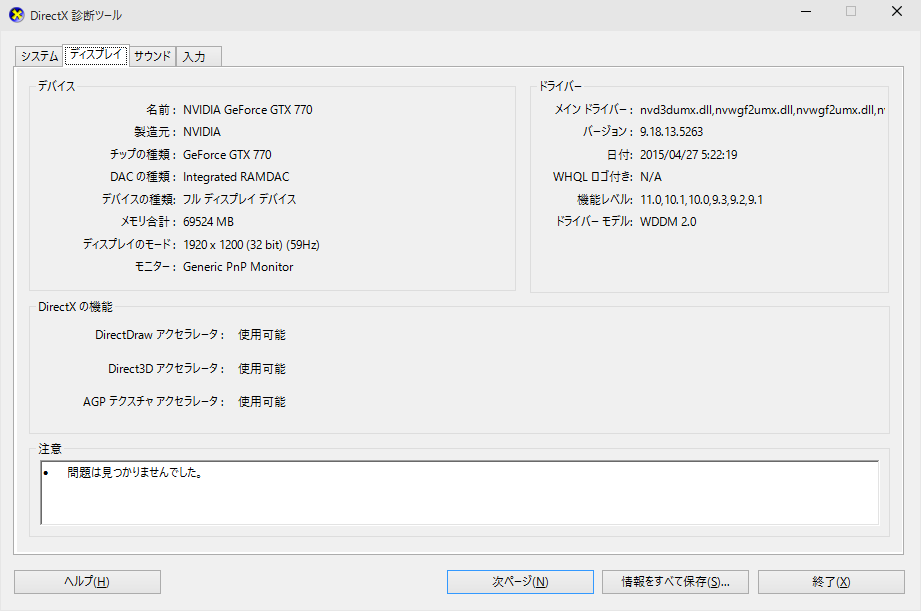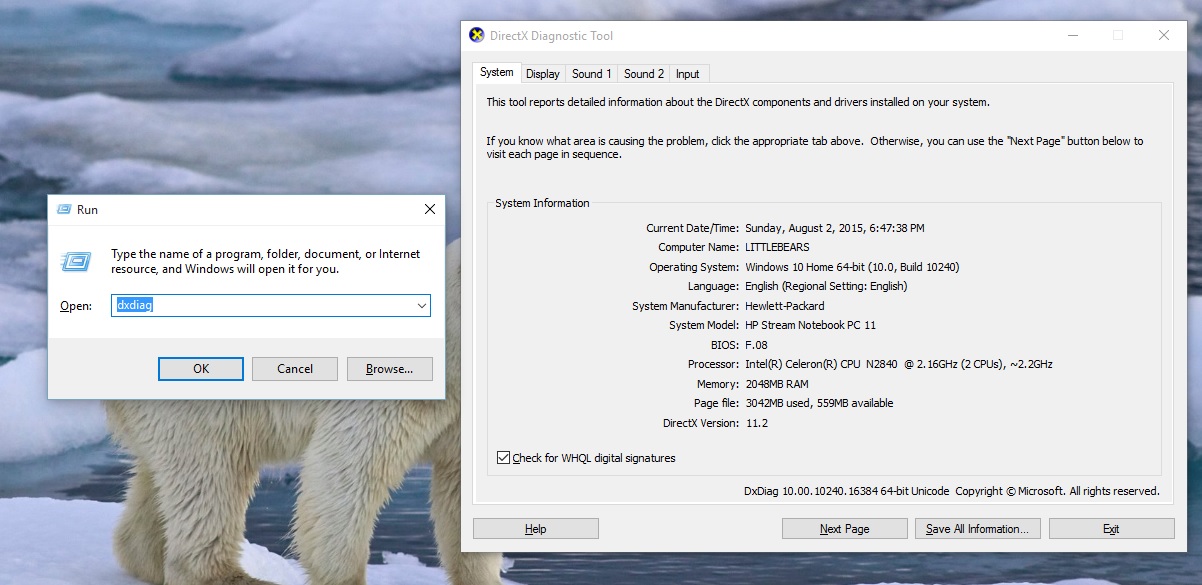
Just click the “Save All Information” button to create the text file and save it wherever you like.Īnd that’s it. Uploading that text file (or just pasting its contents) is much easier than trying to convey all the information on each tab. If you’re working with support personnel from Microsoft or application developers (or even browsing help forums on the internet), they may ask for your DirectX information. Perhaps the most useful part of the DirectX Diagnostic Tool is the ability to save all the information shown on these tabs to a text file that you can then share with others. The Input tab shows basic information about the input devices (like your mouse and keyboard) used on your system, along with related devices (like the USB controller the devices are connected to). The Sound tab of the diagnostic tool shows you information about the sound hardware, drivers, and output devices in use on your system. No matter which version of Windows and DirectX you have, though, the steps we describe here for running a diagnostic should still apply. So, for example, if you’re running Windows 10 but using a card that was designed for DirectX 11, you’ll be running DirectX 11. The specific version you are running, however, will depend both on the version of Windows you have installed and the DirectX version supported by your graphics adapter.


The most recent version, which is included with Windows 10, is DirectX 12. The first version was released back in the Windows 95 days. RELATED: How to Update DirectX on Windows 11ĭirectX (and its diagnostic tool) has been around for a long time. If you want to check what version of DirectX you’re running–or even output a file full of diagnostic information for troubleshooting–here’s how to do it.

The DirectX Diagnostic Tool displays a wealth of information about DirectX, and also lets you perform basic diagnostic tests on the DirectX system. DirectX is a collection of APIs used in Windows for multimedia and video programs, and is especially important to gamers.


 0 kommentar(er)
0 kommentar(er)
